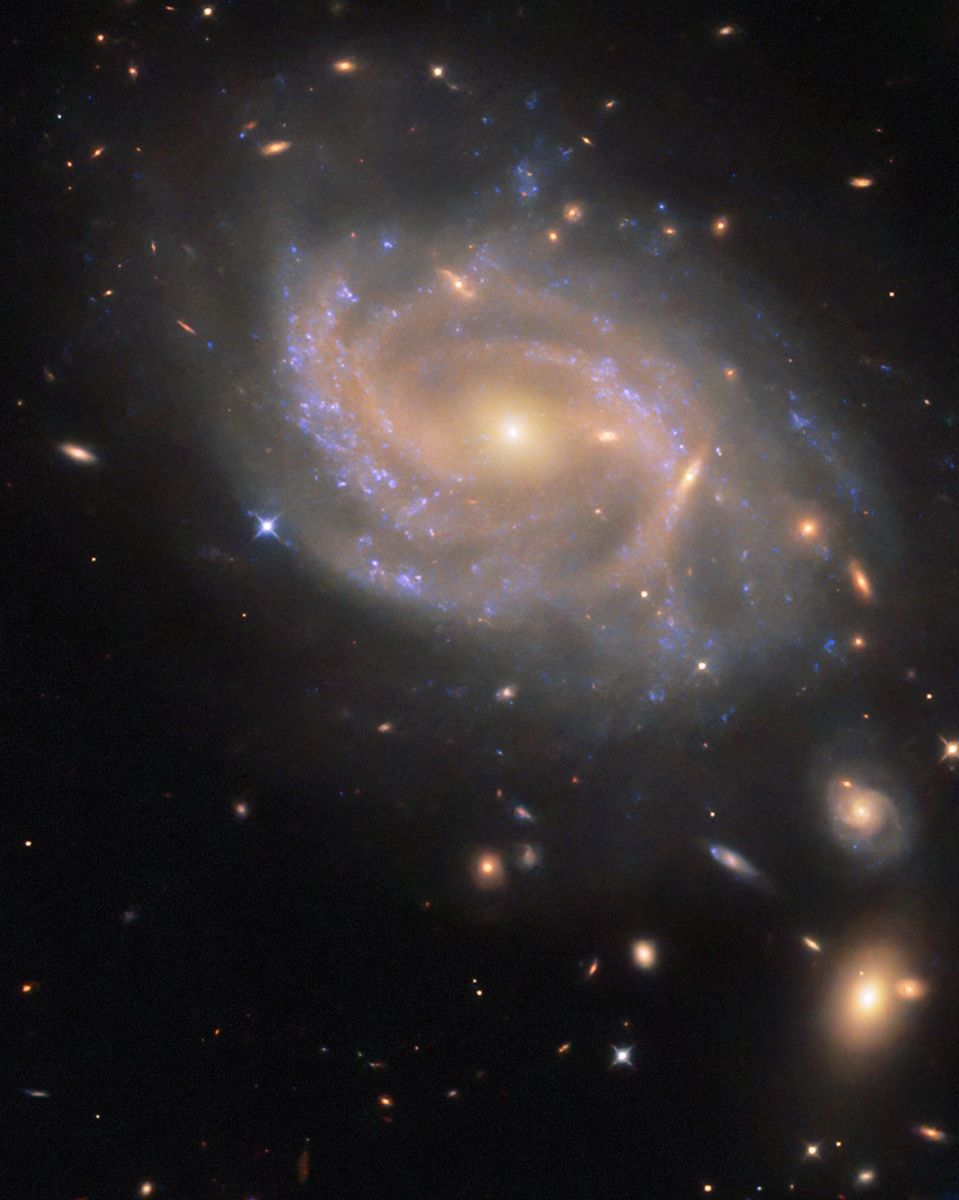NGC 3285B Spiral Galaxy in Hydra: A Supernova’s Host

The NGC 3285B galaxy stands out as a remarkable spiral galaxy situated 137 million light-years away in the Hydra constellation. Known as the Water Snake, Hydra is the largest and longest constellation in the night sky, spanning 100 degrees—an angular distance that would require nearly 200 full Moons placed side by side to cross.
NGC 3285B belongs to the Hydra I cluster, one of the most massive galaxy clusters in the nearby universe. These clusters comprise hundreds to thousands of galaxies held together by gravity. At its heart, the Hydra I cluster contains two colossal elliptical galaxies, each stretching roughly 150,000 light-years across—significantly larger than our own Milky Way.
However, the NGC 3285B galaxy lies on the outskirts of this vast galactic city. It drew the attention of astronomers in 2023 when it became the host of a Type Ia supernova event. Type Ia supernovae occur when a white dwarf—a collapsed stellar core—undergoes a thermonuclear explosion. The resulting flare shines up to five billion times brighter than the Sun. This particular event, named SN 2023xqm, appears in the Hubble image as a faint blue dot along the galaxy’s disk.
Hubble observed this galaxy as part of an initiative focused on 100 Type Ia supernovae. By capturing these cosmic events in ultraviolet, optical, and near-infrared wavelengths, scientists aim to improve how we measure distances in the universe. Understanding how light is affected by both dust and distance helps refine our knowledge of cosmic expansion.
For more discoveries like this, explore our Astronomical Discoveries and Space Missions sections.


ahh… Hydra?!…That’s how Hubble observed…!
78winvip looks pretty tempting. VIP treatment sounds good to me! Is the gameplay any good? Share your thoughts! Ready to win? Check it out at: 78winvip
Jililive777… the ‘live’ part got me curious, and it delivers! Live dealer games were pretty engaging. If you’re tired of the usual slots, give this a try. Get your live fix: jililive777
Someone mentioned ff168, so I decided to give it a try. Not bad, not bad at all! Could definitely kill some time there. Head over to: ff168
Hey everyone, I recently checked out vn95 and wanted to share my thoughts. They have a good selection of different games and the website is easy to navigate. Check it out for yourself at vn95
Yo, 789bet08. I just tried this site and I think it is worth it! 789bet08